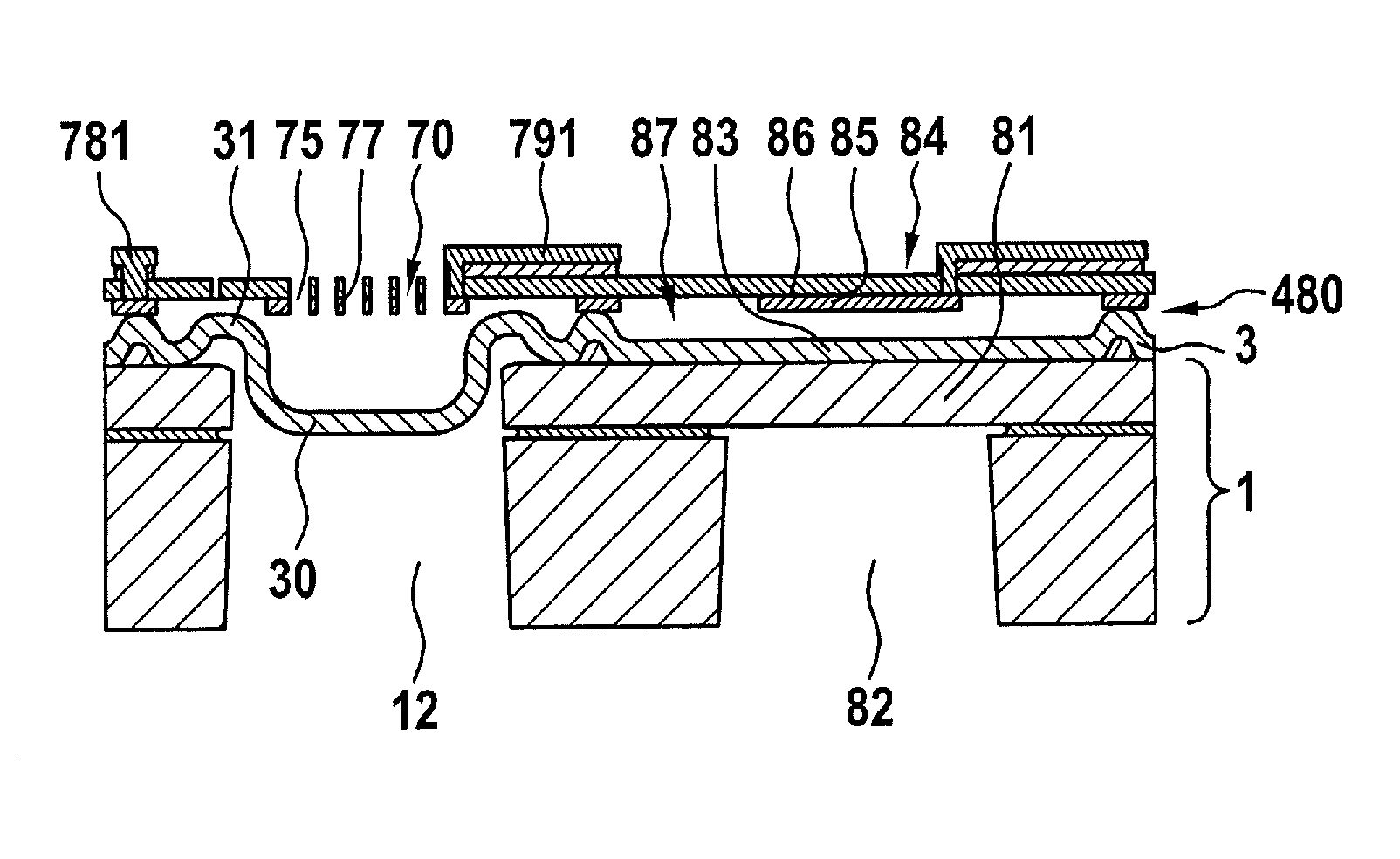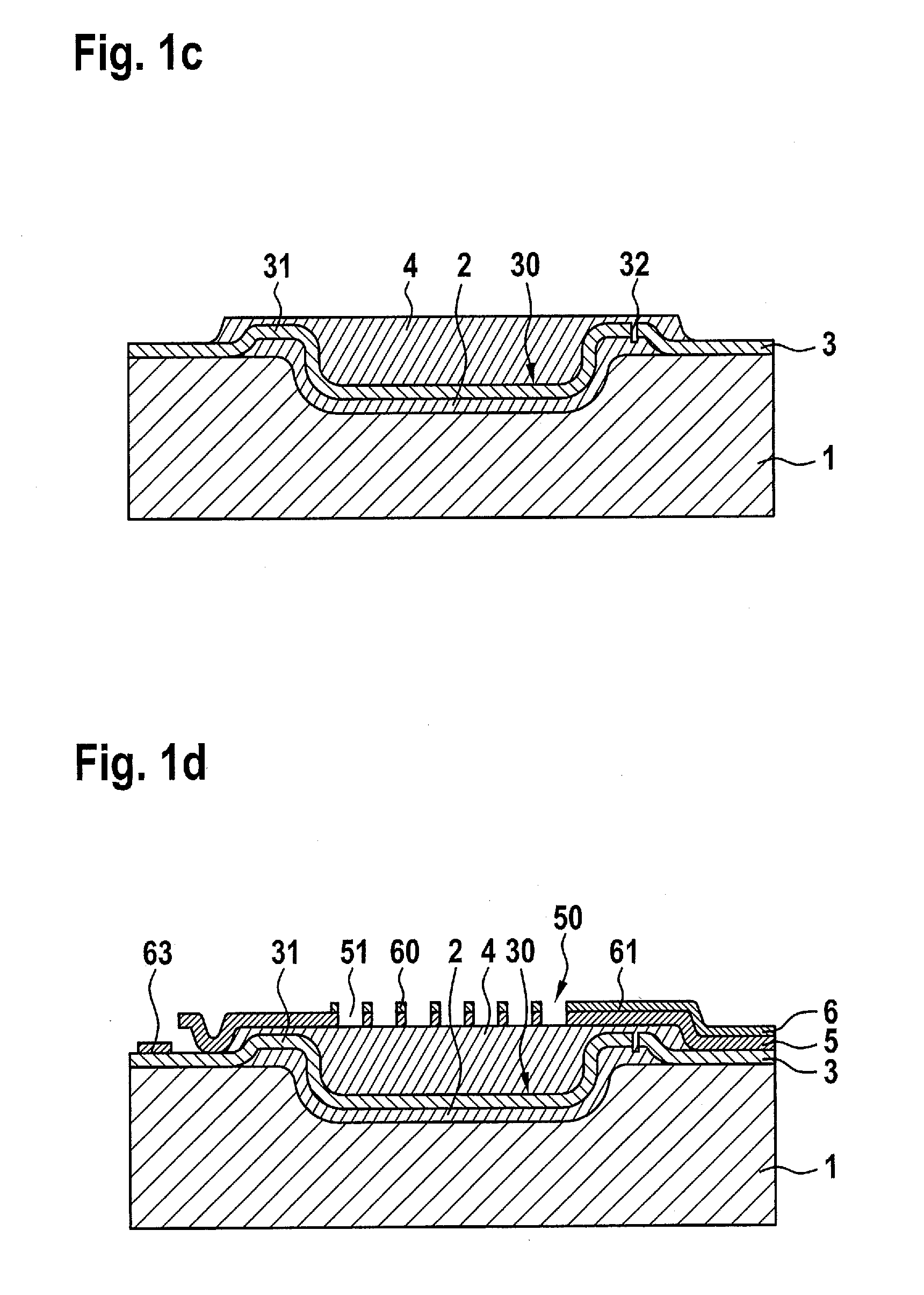MEMS device having a microphone structure, and method for the production thereof
a technology of a microphone and a diaphragm, which is applied in the direction of transducer types, loudspeakers, and electrostatic transducers of semiconductor electrostatic transducers, can solve the problems of mechanical tension in the diaphragm structure, disadvantageous effect of the microphone, and known microphone devices, etc., to achieve good acoustic sealing of the microphone structure and reduce the occurrence of mechanical tension in the diaphragm
- Summary
- Abstract
- Description
- Claims
- Application Information
AI Technical Summary
Benefits of technology
Problems solved by technology
Method used
Image
Examples
Embodiment Construction
[0024]The starting point for the production of a MEMS device having a microphone structure of the type under consideration here is a base substrate 1. This can be for example a monocrystalline silicon substrate, as in the exemplary embodiment described here, or can also be an SOI wafer or some other semiconductor bearer. FIG. 1a shows base substrate 1 after a recess 11 has been made in the substrate surface for the realization of the microphone diaphragm. The depth and shape of this recess 11 determine the pan shape of the microphone diaphragm. In order to avoid mechanical stresses in the diaphragm structure, here rounded-off contours have been chosen for the microphone diaphragm and, correspondingly, for recess 11. In principle, recess 11 can be produced using any structuring method. In order to obtain edges that are as rounded off as possible, in the example shown here the silicon in the region of recess 11 that is to be produced is first etched in porous fashion and then selectiv...
PUM
| Property | Measurement | Unit |
|---|---|---|
| curvature radius | aaaaa | aaaaa |
| curvature radius | aaaaa | aaaaa |
| depth | aaaaa | aaaaa |
Abstract
Description
Claims
Application Information
 Login to View More
Login to View More - R&D
- Intellectual Property
- Life Sciences
- Materials
- Tech Scout
- Unparalleled Data Quality
- Higher Quality Content
- 60% Fewer Hallucinations
Browse by: Latest US Patents, China's latest patents, Technical Efficacy Thesaurus, Application Domain, Technology Topic, Popular Technical Reports.
© 2025 PatSnap. All rights reserved.Legal|Privacy policy|Modern Slavery Act Transparency Statement|Sitemap|About US| Contact US: help@patsnap.com



